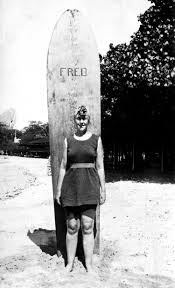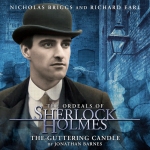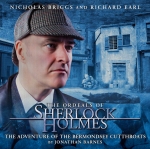The Kitchen Thinker: Sherlock Holmes's diet
Bee Wilson on the mysterious case of Sherlock Holmes's diet.
In preparation for the title role in Sherlock Holmes, the new film due for release on Boxing Day, Robert Downey Jr went on a diet.
His friend the rock star Chris Martin warned Downey Jr that he had to be 'skinny’ to play Holmes. 'So every time I’m reaching for a muffin I just think about Chris Martin and skip the snack. It’s been tough.’ Not half as tough, however, as it will be to sit through the film, if the trailer is anything to go by.
As any real Holmes fan would know, the great detective isn’t the kind of Hollywood 'skinny’ that comes from lounging around denying yourself muffins. His thinness results from his intense bouts of mental activity, when he subsists on little but coffee, drugs and nerves. In The Hound of the Baskervilles he tells Watson that his mind has been in Devon solving the case, while his body has 'remained in this armchair and has, I regret to observe, consumed in my absence two large pots of coffee and an incredible amount of tobacco’.
But when he is not in the thick of it Holmes is appreciative of good food, especially breakfast. Numerous stories begin with Holmes seated at the breakfast table, with a polished silver coffee pot in front of him ('He chuckled as he poured out the coffee’). The housekeeper at 221b Baker Street, Mrs Hudson, provides Holmes and Dr Watson with hearty breakfasts such as kidneys, kedgeree, ham and eggs and even chicken curry, covered under metal domes on the sideboard. In
The Adventure of Black Peter Holmes apologises to a policeman who joins them for breakfast. 'I fear the scrambled eggs are cold.’
Holmes is certainly no gourmet.
His 'wants’, he says, are 'simple: a loaf of bread and a clean collar’. Holmes’s occupation makes regular meals impossible and he sometimes falls back on 'some cold beef and a glass of beer’ or tinned tongue and peaches. Like all workaholics, he often relies on sandwiches. On the trail of a jewel thief 'he cut a slice of beef from the joint upon the sideboard, sandwiched it between two rounds of bread and thrusting this rude meal into his pocket, he started off upon his expedition’.
Occasionally, though, Holmes relaxes enough to savour his food, and these are some of the most comforting moments in all of the stories. In
The Sign of Four he complains that Watson has 'never yet recognised my merits as a housekeeper’. He invites Mr Athelney Jones of Scotland Yard to dine with them. 'It will be ready in half an hour. I have oysters and a brace of grouse, with something a little choice in white wines.’ Was ever a more inviting offer made?
Perhaps the best foodie story is The Blue Carbuncle, in which a precious jewel is hidden inside a Christmas goose. It gives a rich sense of households all over London sitting down to enjoy a good fat goose for the festive meal.
The whole story is rich with Christmas appetite: the cold air of London and the warmth of excellent birds roasted before the fire.
When you think of Sherlock Holmes you don’t want Chris Martin and muffins in your head. You want to think of fat geese, cold beef, brandy, strong coffee and the thrill of the chase.


























